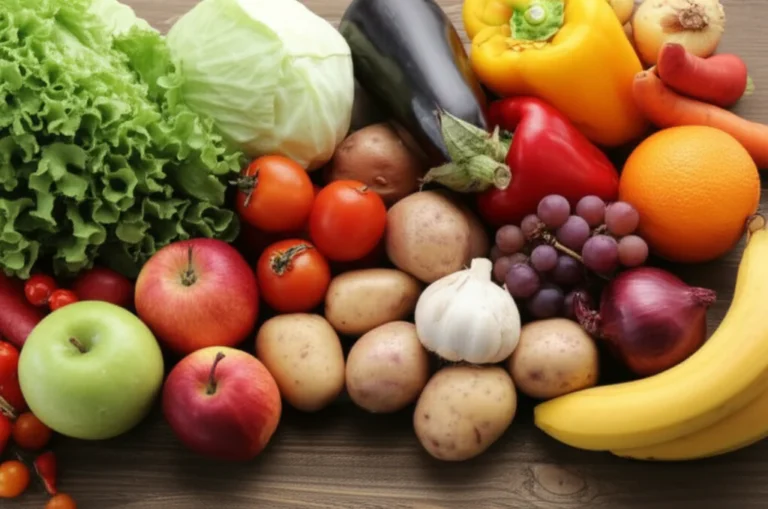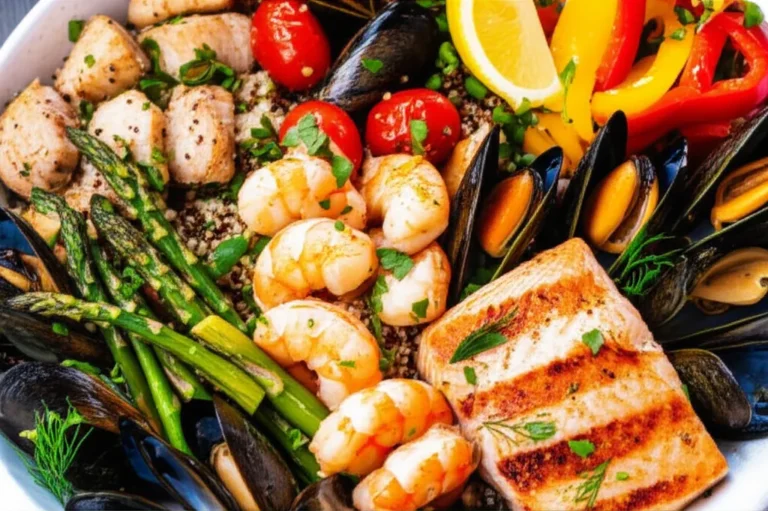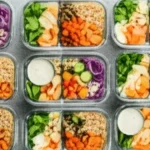Support our educational content for free when you buy through links on our site. Learn more
15 Irresistible Blue Zone Diet Recipes for Longevity 🥗 (2025)
Imagine savoring meals inspired by the world’s longest-lived people—dishes so vibrant, flavorful, and nourishing that they don’t just satisfy your hunger but also boost your lifespan. That’s the magic of Blue Zone diet recipes. From the sun-soaked shores of Ikaria to the lush mountains of Sardinia, these recipes have powered centenarians for generations. But what if we told you that adopting these meals doesn’t mean sacrificing taste or convenience?
In this article, our expert team at Flexitarian Diet™ unwraps 15 mouthwatering Blue Zone-inspired recipes, along with insider tips on pantry essentials, meal planning, and lifestyle habits that amplify longevity. Curious how a simple Za’atar and Sumac-Roasted Tofu or a warm Brussels sprouts salad can transform your health? Or how to snack smart like a Nicoyan centenarian? Keep reading—we’ve got you covered with everything you need to start living your own Blue Zone story.
Key Takeaways
- Blue Zone diets focus on mostly plant-based, whole foods with an emphasis on beans, nuts, whole grains, and seasonal vegetables.
- Incorporate simple, flavorful recipes like Seedy Avocado Toast Arepas and Ikarian Lentil Soup to fuel your day with sustained energy.
- Snack smart with nuts, olives, and fresh fruit to keep cravings in check without processed junk.
- Adopt holistic lifestyle habits such as purposeful movement, stress reduction, and strong social connections to complement your diet.
- Meal planning and pantry stocking are key to making Blue Zone eating practical and affordable.
Ready to stock your pantry and get cooking?
👉 Shop Blue Zone Staples on:
Table of Contents
- ⚡️ Quick Tips and Facts: Your Blue Zone Blueprint
- Unlocking Longevity: The Blue Zones Diet Philosophy & Our Flexitarian Twist
- The Blue Zone Pantry: Essential Ingredients for a Longer Life
- Blue Zone Breakfasts: Fueling Your Day the Longevity Way ☀️
- Wholesome Lunches: Midday Meals for Sustained Vitality 🥗
- Dinner Delights: Nourishing Evening Feasts for a Healthier You 🍲
- Smart Snacking: Blue Zone Bites to Beat Cravings & Boost Energy 🍎
- Sweet Endings: Guilt-Free Blue Zone Desserts & Treats 🍰
- Sip Your Way to Health: Blue Zone Beverages & Infusions ☕
- Beyond the Plate: Integrating Blue Zone Lifestyle Habits for Holistic Health ✨
- Meal Planning Mastery: Crafting Your Blue Zone Weekly Menu with Ease 🗓️
- Budget-Friendly Blue Zones: Eating Well Without Breaking the Bank 💰
- Common Pitfalls & How to Avoid Them on Your Blue Zone Journey 🚧
- Conclusion: Your Journey to a Longer, Healthier Life Starts Now! 🚀
- Recommended Links: Dive Deeper into Blue Zone Wisdom 🔗
- FAQ: Your Burning Blue Zone Questions Answered 🔥
- Reference Links: Our Sources for Longevity Science 📚
Here we go! Let’s dive into the delicious, life-extending world of Blue Zone cooking.
⚡️ Quick Tips and Facts: Your Blue Zone Blueprint
Ready to jumpstart your journey to 100? We get it. Sometimes you just want the highlights. Here at Flexitarian Diet™, we’re all about making healthy living easy and accessible. So, before we dive deep, here’s your cheat sheet to eating like the world’s longest-lived people, a core part of the Blue Zone diet.
| Blue Zone Principle 🌍 | Quick Takeaway & Actionable Tip |
|---|---|
| Plant Slant | ✅ Make plants the star! About 95% of your food should come from vegetables, fruits, grains, and legumes. Meat is a celebration food, not a daily staple. |
| Bean Bonanza | ✅ Eat at least a half cup of cooked beans daily. From fava beans in Sardinia to black beans in Nicoya, they’re the cornerstone of every Blue Zone diet. |
| Go Whole | ✅ Choose whole foods. Think single-ingredient foods that your great-grandmother would recognize. If it comes in a crinkly bag with a mascot, it’s probably not it. |
| The 80% Rule | ✅ Stop eating when you’re 80% full. This Okinawan practice, known as Hara Hachi Bu, helps prevent overeating and aids digestion. |
| Daily Nuts | ✅ Snack on a handful of nuts each day. They’re packed with healthy fats and protein. Almonds, walnuts, and pistachios are fantastic choices. |
| Sourdough, Not Wonder Bread | ✅ Opt for true sourdough bread. The fermentation process lowers gluten and adds beneficial bacteria, making it easier to digest than standard commercial breads. |
| Drink Up! | ✅ Water is your best friend. Also enjoy coffee, tea, and—if you choose—a little red wine with friends. Ditch the sugary sodas and juices. |
| Goat’s Milk Goodness | ✅ Consider fermented goat or sheep’s milk products. People in Ikaria and Sardinia enjoy products like yogurt and cheese, which are rich in probiotics. |
| Slash the Sugar | ❌ Avoid added sugar. Centenarians consume about a fifth of the added sugar as the average North American. Treat sweets as a rare treat. |
Unlocking Longevity: The Blue Zones Diet Philosophy & Our Flexitarian Twist
Ever wonder if there’s a secret recipe for living to a vibrant 100? Well, it turns out there might be five of them! The concept of “Blue Zones” was born from the work of explorer and author Dan Buettner, who traveled the globe with National Geographic to identify pockets where people live measurably longer, healthier, and happier lives. These five regions are:
- Okinawa, Japan: Home to the world’s longest-lived women.
- Sardinia, Italy: Boasts the highest concentration of male centenarians.
- Nicoya, Costa Rica: A region where residents have a strong sense of plan de vida (purpose).
- Ikaria, Greece: An island with very low rates of dementia and chronic disease.
- Loma Linda, California: A community of Seventh-day Adventists who outlive the average American by about a decade.
What’s their secret sauce? It’s not just one thing, but a powerful combination of lifestyle habits known as the Power 9®. And guess what’s at the very heart of it all? Food.
But here’s the kicker. As Buettner himself warns, “The Blue Zones’ food tradition is going the way of the dodo bird, thanks to the encroachment of the American Food Culture.” This is where we, as a team of flexitarian fanatics, get fired up! The Blue Zone diet is, in its essence, a flexitarian diet. It’s about being mostly vegetarian, not obsessively so. It’s a perfect fit for our Flexitarian Basics philosophy. They eat meat on average only five times per month, treating it as a small side or a celebratory dish. This isn’t a diet of deprivation; it’s a diet of abundance—overflowing with flavor, nutrients, and life.
The Blue Zone Pantry: Essential Ingredients for a Longer Life
Ready to cook up some longevity? The first step is stocking your kitchen like a centenarian. Forget weird, expensive “superfoods.” The Blue Zone pantry is all about humble, affordable, and powerful staples. Our dietitians have vetted this list to ensure it’s packed with the good stuff.
H3: The Four Pillars of the Blue Zone Pantry
- Beans & Legumes (The Cornerstone): If you do one thing, do this. Beans are king! They’re packed with fiber, protein, and complex carbs.
- What to buy: Dried or canned (low-sodium) lentils, chickpeas (garbanzo beans), black beans, fava beans, cannellini beans. Brands like Eden Foods offer excellent BPA-free canned options.
- Whole Grains (The Slow Burn): These provide steady energy without the sugar crash.
- What to buy: Oats (steel-cut or rolled), barley, brown rice, quinoa, and true, whole-wheat sourdough bread. We love the texture and quality of grains from Bob’s Red Mill.
- Nuts & Seeds (The Healthy Fats): A small handful a day keeps the doctor away (or so we like to think!).
- What to buy: Raw almonds, walnuts, pistachios, flax seeds, and chia seeds.
- Vibrant Veggies & Fruits (The Rainbow): Eat a wide variety of colors!
- What to buy: Dark leafy greens (spinach, kale, chard), sweet potatoes, squash, tomatoes, fennel, garlic, onions, and whatever is fresh and in season!
For a deeper dive into the power of these foods, check out our Flexitarian Nutrition Facts.
Ready to stock up?
Blue Zone Breakfasts: Fueling Your Day the Longevity Way ☀️
In many Blue Zones, breakfast isn’t a massive, sugary affair. It’s a simple, nourishing start to the day. Think savory, not sweet. Our personal trainer, Mike, switched from protein shakes to a Blue Zone-inspired breakfast and noticed a huge difference in his sustained energy through morning clients.
Seedy Avocado Toast Arepas
Forget plain toast. Let’s give it a Nicoyan twist! Arepas are cornmeal cakes, and they are a perfect gluten-free vehicle for deliciousness.
- What you’ll need: Masa arepa (we like the P.A.N. brand), a ripe avocado, lime juice, cilantro, pumpkin seeds, and a pinch of red pepper flakes.
- The quick-and-dirty: Mix the masa arepa with water and salt to form patties. Pan-fry in a little olive oil until golden. Mash the avocado with lime and cilantro, spread it on the warm arepa, and top with seeds and spice. It’s a 10-minute breakfast that will keep you full until lunch. Find more ideas in our Flexitarian Recipes section!
Wholesome Lunches: Midday Meals for Sustained Vitality 🥗
“Make breakfast like a king, lunch like a prince, and dinner like a pauper.” You’ve heard it before, right? Many Blue Zone inhabitants live by this, making lunch their main meal of the day. This gives your body ample time to digest before winding down.
Ikarian-Style Lentil & Veggie Soup
This is the kind of soup you can make a giant pot of on Sunday and enjoy all week. It only gets better with time!
- The heart of it: Brown lentils, chopped carrots, celery, onions, a ton of garlic (don’t be shy!), diced tomatoes, and a generous glug of good quality olive oil.
- The secret weapon: A splash of red wine vinegar and a handful of fresh dill or fennel fronds stirred in at the end. This brightens up all the earthy flavors.
- How to do it: Sauté your veggies in olive oil until soft. Add the lentils, tomatoes, and enough vegetable broth or water to cover generously. Simmer until the lentils are tender (about 30-40 minutes). Season with salt, pepper, and finish with the vinegar and fresh herbs. Serve with a slice of that glorious sourdough bread for dipping.
Dinner Delights: Nourishing Evening Feasts for a Healthier You 🍲
Dinner in the Blue Zones is often a lighter, simpler meal, shared with family. It’s the perfect time to use up leftovers or whip up something quick and satisfying. Here are some of our team’s favorite go-to recipes.
1. Legume & Tofu Powerhouses: Protein-Packed Plant-Based Mains
Tofu gets a bad rap, but Okinawans have been eating it for centuries! It’s a fantastic source of plant-based protein. The key is to get firm or extra-firm tofu and press it well to remove excess water. We’re big fans of Nasoya or House Foods tofu for their great texture.
Za’atar and Sumac-Roasted Tofu
- The Vibe: A Middle-Eastern inspired dish that’s bursting with flavor.
- Ingredients: 1 block extra-firm tofu (pressed!), olive oil, za’atar spice blend, sumac, salt, and pepper.
- Steps:
- Preheat your oven to 400°F (200°C).
- Cube the pressed tofu.
- In a bowl, toss the tofu with a generous coating of olive oil, za’atar, sumac, salt, and pepper. Get your hands in there and make sure every piece is coated!
- Spread on a baking sheet in a single layer.
- Roast for 25-30 minutes, flipping halfway, until the edges are crispy and golden.
- Serve over a bed of greens with a squeeze of lemon. Delicious!
2. Grain-Glorious Goodness: Wholesome Bowls & Hearty Stir-Fries
Got leftover rice? Perfect! Food waste is a big no-no in the Blue Zones. This “recipe” is more of a method, perfect for a quick weeknight dinner.
Second-Chance Sheet Pan “Fried” Rice
- The Vibe: All the flavor of fried rice, but way healthier and with less cleanup.
- Ingredients: 2-3 cups of cooked, chilled brown rice; 1 bag of frozen mixed veggies (peas, carrots, corn, green beans); 1 block of tofu or 1 can of chickpeas; soy sauce (or tamari); sesame oil; chopped scallions.
- Steps:
- Preheat oven to 425°F (220°C).
- On a large sheet pan, toss the frozen veggies and your protein (crumbled tofu or chickpeas) with a little soy sauce and sesame oil.
- Roast for 15 minutes until the veggies are tender-crisp.
- Remove from the oven, add the cold rice to the pan, and break it up. Drizzle with a bit more soy sauce and sesame oil and toss everything together right on the pan.
- Return to the oven for 10 more minutes, until the rice is heated through and slightly crispy in spots.
- Top with fresh scallions before serving.
3. Vibrant Vegetable Victories: Soups, Salads & Roasted Wonders
Vegetables are the undisputed champions of the Blue Zone plate. This salad is a perfect example of how to make them the star.
Warm Brussels Sprouts Salad with Pecans & Mustard Vinaigrette
- The Vibe: A hearty, restaurant-quality salad that’s surprisingly easy.
- Ingredients: 1 lb Brussels sprouts, olive oil, salt, pepper, a handful of pecans, and a simple vinaigrette (Dijon mustard, apple cider vinegar, maple syrup, olive oil).
- Steps:
- Preheat oven to 400°F (200°C).
- Trim and halve the Brussels sprouts. Toss with olive oil, salt, and pepper.
- Roast for 20-25 minutes until tender and caramelized.
- While they roast, whisk together your vinaigrette ingredients.
- Toss the warm, roasted sprouts with the vinaigrette and top with toasted pecans. You can also add some crumbled feta or goat cheese if you’re feeling it!
Smart Snacking: Blue Zone Bites to Beat Cravings & Boost Energy 🍎
Snacking in the Blue Zones isn’t about processed bars or bags of chips. It’s simple, purposeful, and whole. Our health coach, Maria, always reminds clients that the benefits of a flexitarian diet extend to how you snack.
- ✅ A Handful of Nuts: A mix of almonds, walnuts, and pistachios is a perfect go-to.
- ✅ Fresh Fruit: An apple, a banana, a bowl of berries. Simple and effective.
- ✅ Olives: Especially in the Mediterranean Blue Zones, olives are a common, savory snack packed with healthy fats.
- ✅ A Small Bowl of Leftover Soup: Why not? It’s warm, filling, and nutritious.
- ❌ Processed Crackers & Chips: Often loaded with refined flour, unhealthy fats, and sodium.
- ❌ Sugary Granola Bars: Most are just candy bars in disguise. Read your labels!
Sweet Endings: Guilt-Free Blue Zone Desserts & Treats 🍰
Dessert is a treat, not a nightly ritual. When centenarians do indulge, it’s typically with something naturally sweet. Honey is used, but sparingly, and often raw and local.
Honey-Drizzled Figs with Walnuts
This is elegance in its simplest form.
- What you need: Fresh, ripe figs, a handful of walnuts, and a small drizzle of high-quality honey (like Manuka or a local wildflower honey).
- How to make it: Slice the figs in half, top with a walnut, and drizzle with the tiniest bit of honey. That’s it. It’s a perfect, satisfying end to a meal that honors the Blue Zone philosophy.
Sip Your Way to Health: Blue Zone Beverages & Infusions ☕
What you drink is just as important as what you eat. The beverage menu in the Blue Zones is simple and powerful.
- Water: The undisputed champion. Stay hydrated!
- Coffee: Sardinians and Nicoyans drink coffee daily. It’s loaded with antioxidants.
- Tea: Okinawans prefer green tea, while Ikarians sip on herbal teas made from wild rosemary, sage, and oregano. Brands like Traditional Medicinals offer a wide variety of organic herbal teas.
- Red Wine: This is the famous “Wine @ 5” habit. In Sardinia, they drink a local, antioxidant-rich Cannonau wine. The key? It’s one small glass, enjoyed with food and friends. It’s about community, not intoxication.
Herbal Iced Tea with Fresh Peaches
- The Vibe: A refreshing, sugar-free drink for a hot day.
- How to make it: Brew a strong batch of your favorite herbal tea (hibiscus or mint work beautifully). Let it cool. Pour over ice and add several slices of fresh, ripe peach. The peach will infuse the tea with a natural sweetness as it sits.
Beyond the Plate: Integrating Blue Zone Lifestyle Habits for Holistic Health ✨
We’ve talked a lot about food, but as our health coaches always stress, you can’t out-eat a stressful or sedentary life. The food is just one of the Power 9 principles. True longevity comes from weaving these habits into the fabric of your life.
- Move Naturally: Find ways to move that you enjoy. Gardening, walking, yoga—no extreme gym sessions required.
- Purpose (Ikigai): Know why you wake up in the morning.
- Down Shift: Find a routine to shed stress, whether it’s prayer, napping, or happy hour.
- Right Tribe: Surround yourself with people who support healthy behaviors.
This holistic approach is the core of a true Flexitarian Lifestyle, and it’s what makes the Blue Zone model so powerful and sustainable.
Meal Planning Mastery: Crafting Your Blue Zone Weekly Menu with Ease 🗓️
Feeling inspired but a little overwhelmed? Let’s make it concrete. Here’s what a few days of Blue Zone eating could look like. Notice how leftovers are repurposed to save time and money!
| Meal | Day 1 | Day 2 | Day 3 |
|---|---|---|---|
| Breakfast | Savory Oatmeal with olive oil, salt, and nuts | Sourdough Toast with almond butter and sliced banana | Seedy Avocado Toast Arepa |
| Lunch | Big Pot of Ikarian Lentil Soup with sourdough | Leftover Lentil Soup | Large Salad with chickpeas, veggies, and a lemon-tahini dressing |
| Dinner | Za’atar and Sumac-Roasted Tofu with a side of roasted sweet potatoes | Leftover Roasted Tofu on a bed of greens | Second-Chance Sheet Pan “Fried” Rice using leftover rice |
| Snack | Handful of almonds & an apple | A few olives & a piece of dark chocolate (>70%) | Small bowl of plain goat’s milk yogurt with berries |
Budget-Friendly Blue Zones: Eating Well Without Breaking the Bank 💰
One of the biggest myths about healthy eating is that it has to be expensive. The Blue Zone diet is proof that this is completely false! In fact, it’s one of the most affordable ways to eat on the planet.
- Beans are cheap! A bag of dried beans costs very little and can provide meals for days.
- Buy in bulk. Grains, nuts, and spices are often cheaper from the bulk bins.
- 👉 Shop seasonally. Produce is always more affordable (and tastier!) when it’s in season. Visit a local farmer’s market if you can.
- Reduce meat consumption. This is often the biggest expense on a grocery bill. By shifting to a plant-slant diet, you’ll naturally save money.
- Embrace store brands. You don’t always need the fancy label. Store brands like 365 by Whole Foods Market or Simple Truth by Kroger offer high-quality organic staples for less.
Common Pitfalls & How to Avoid Them on Your Blue Zone Journey 🚧
Starting any new lifestyle has its challenges. As coaches, we’ve seen a few common stumbles. Here’s how to sidestep them and stay on the path to a hundred.
-
Pitfall: The “All or Nothing” Trap. You eat a piece of cake at a party and feel like you’ve failed, so you give up entirely.
- ✅ The Fix: Embrace the 95/5 rule. The Blue Zone diet is about what you do most of the time. It’s a flexitarian approach! Enjoy the celebration, and get back to your nourishing staples at the next meal. Progress, not perfection.
-
Pitfall: The Bland Food Blues. You’re just steaming vegetables and eating plain beans, and you’re bored out of your mind.
- ✅ The Fix: Become a master of herbs and spices! The recipes we shared are packed with flavor from things like za’atar, sumac, fresh dill, and garlic. Explore global cuisines. A simple can of chickpeas can become a spicy Indian chana masala or a creamy Mediterranean hummus.
-
Pitfall: The “Healthy” Processed Food Illusion. You’re buying lots of products labeled “vegan,” “gluten-free,” or “plant-based,” but they’re still highly processed.
- ✅ The Fix: Focus on whole foods. The Blue Zone diet isn’t about vegan chicken nuggets or plant-based cheese made with 20 ingredients. It’s about beans, greens, grains, and nuts. Always read the ingredient list—if you can’t pronounce it, you probably don’t need to eat it.
Conclusion: Your Journey to a Longer, Healthier Life Starts Now! 🚀
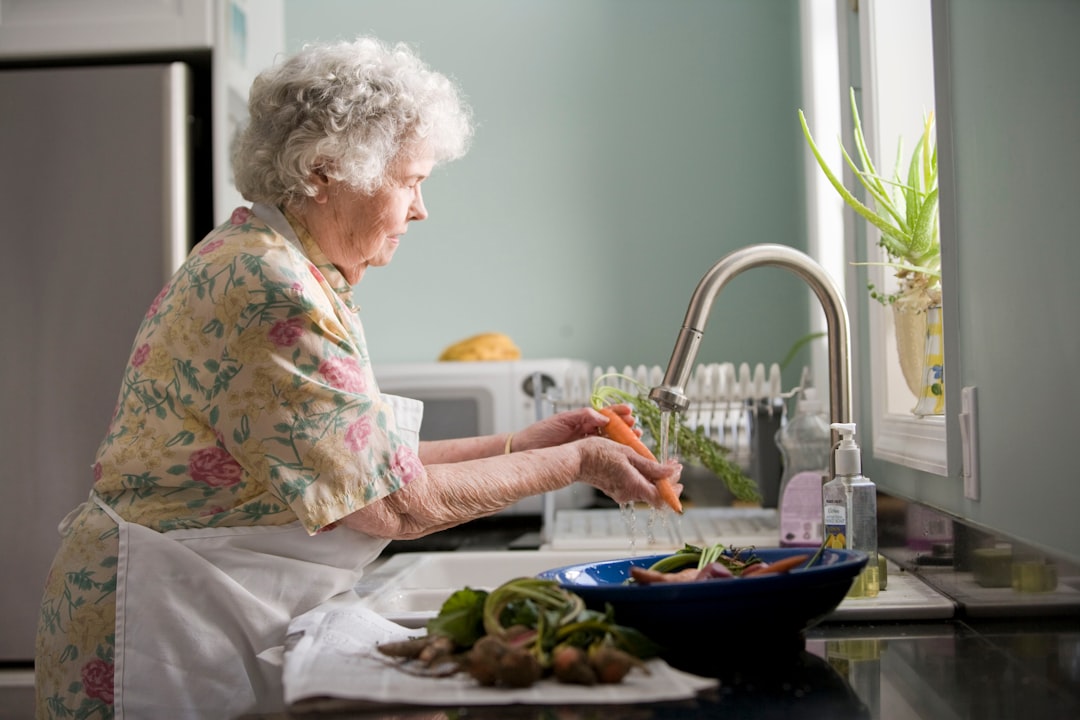
Well, there you have it—a full plate of wisdom, recipes, and lifestyle tips inspired by the world’s longest-lived people. The Blue Zone diet isn’t a fad or a restrictive plan; it’s a vibrant, flavorful, and sustainable way to eat that honors tradition and science alike. Our Flexitarian Diet™ team loves how this mostly plant-based approach fits perfectly with our philosophy: eat mostly plants, enjoy occasional meat, savor whole foods, and live joyfully.
Remember those unresolved questions about flavor and practicality? We hope our recipes like the Za’atar and Sumac-Roasted Tofu or the Second-Chance Sheet Pan “Fried” Rice showed you that Blue Zone meals can be anything but boring. Plus, the meal planning tips and pantry essentials make it easy to integrate these habits into your busy life.
So, what’s next? Start small. Pick one recipe, one habit, or one pantry staple to add this week. Before you know it, you’ll be living your own Blue Zone story—full of health, happiness, and maybe even a few more birthdays than you expected!
Recommended Links: Dive Deeper into Blue Zone Wisdom 🔗
Ready to shop or learn more? Here’s where to find the best products and books to fuel your Blue Zone journey:
-
Beans & Legumes Staples:
Amazon | Walmart | Eden Foods Official Website -
Whole Grains & Sourdough Bread:
Amazon | Bob’s Red Mill Official Website | Walmart -
Tofu Brands:
Nasoya on Amazon | House Foods Official Website -
Herbal Teas:
Traditional Medicinals on Amazon | Traditional Medicinals Official Website -
Cookbooks:
The Blue Zones Kitchen by Dan Buettner on Amazon
Flexitarian Diet™ Recipe Collection
FAQ: Your Burning Blue Zone Questions Answered 🔥
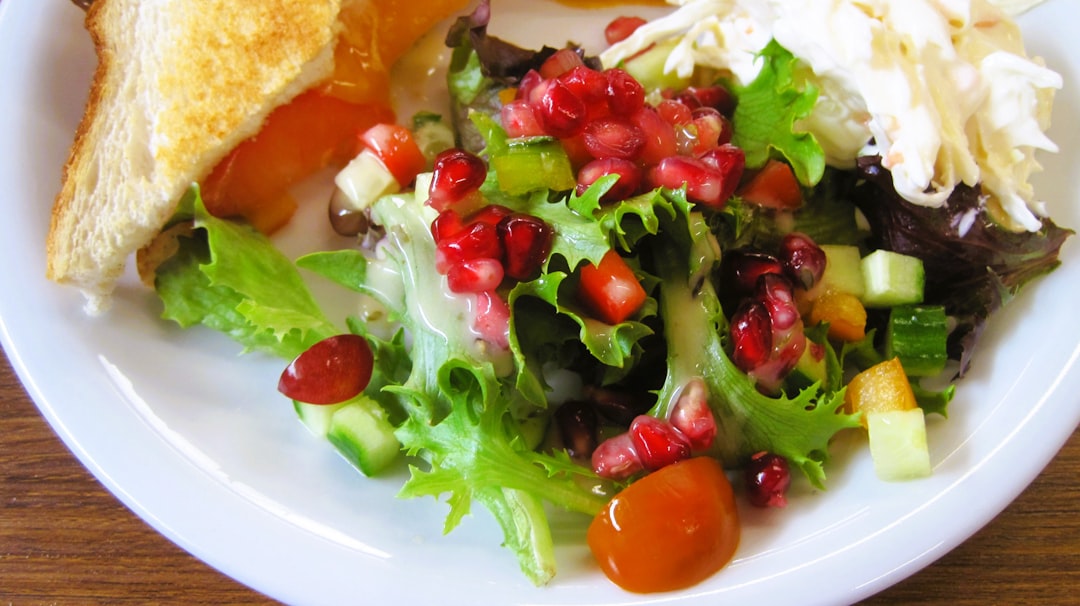
What are the key components of a Blue Zone diet and how can I incorporate them into my daily meals?
The Blue Zone diet centers on mostly plant-based eating, with an emphasis on beans, whole grains, nuts, vegetables, and fruits. Meat is eaten sparingly, often as a celebratory dish rather than a daily staple. To incorporate these components:
- Start your day with whole grains and nuts (like oatmeal topped with walnuts).
- Include beans or legumes in at least one meal daily—think lentil soup or chickpea salad.
- Use vegetables as the main event, not just a side.
- Snack on nuts or fresh fruit instead of processed snacks.
- Limit added sugars and processed foods.
This approach aligns perfectly with the Flexitarian Basics and is flexible enough to fit most lifestyles.
Read more about “What Foods Do You Eat on the Blue Zone Diet? 🥗 10 Power Foods (2025)”
How do I plan a mostly vegetarian Blue Zone diet menu for a week?
Meal planning is key to success. Focus on batch cooking beans, soups, and grains early in the week. Use leftovers creatively to reduce waste and save time. Here’s a quick strategy:
- Pick 2-3 recipes featuring legumes and grains.
- Plan breakfasts around whole grains and fruits.
- Use seasonal vegetables for variety and freshness.
- Incorporate small amounts of animal protein 1-2 times a week if you choose.
- Keep snacks simple—nuts, fruits, or olives.
Our Meal Planning Mastery section offers a sample menu to get you started.
What are some healthy and easy-to-make Blue Zone diet breakfast recipes?
Blue Zone breakfasts tend to be simple, savory, and nutrient-dense. Some favorites include:
- Seedy Avocado Toast Arepas: Cornmeal cakes topped with mashed avocado and seeds.
- Savory Oatmeal: Cooked oats with olive oil, salt, and nuts.
- Sourdough Toast with Nut Butter and Fruit: A classic with a Blue Zone twist.
These breakfasts provide sustained energy without sugar crashes and are easy to prepare even on busy mornings.
Can I still follow a Blue Zone diet if I’m not a vegetarian, and what are some healthy meat options?
Absolutely! The Blue Zone diet is flexitarian, meaning mostly plant-based but allowing occasional meat. Meat is typically consumed in small portions and less frequently (about 5 times per month). Healthy options include:
- Lean poultry or fish.
- Grass-fed or pasture-raised meats.
- Traditional preparations like Sardinian lamb or fresh-caught fish in Ikaria.
The key is moderation and quality over quantity.
What are the benefits of eating whole foods and how does it relate to the Blue Zone diet?
Whole foods are minimally processed and free from artificial additives. Eating whole foods:
- Provides more fiber, vitamins, and minerals.
- Supports a healthy gut microbiome.
- Helps regulate blood sugar and reduce inflammation.
The Blue Zone diet is fundamentally a whole foods diet, which is why it’s so effective for longevity and disease prevention. For more, see our Flexitarian Nutrition Facts.
How can I make traditional Blue Zone diet recipes more appealing to my family who are used to a different type of cuisine?
Great question! Here are some tips:
- Add familiar flavors: Use herbs and spices your family loves.
- Involve them in cooking: Kids and adults alike enjoy meals they help prepare.
- Start with fusion dishes: Combine Blue Zone ingredients with your family’s favorite cuisines.
- Make it colorful: Bright veggies and varied textures entice the eye and palate.
- Be patient: Taste buds adapt over time.
Our recipe adaptations like the Za’atar and Sumac-Roasted Tofu bring bold flavors that win over skeptics.
What are some pantry staples that I need to have to start cooking Blue Zone diet recipes and live a healthier lifestyle?
Stock your pantry with:
- Dried or canned beans and lentils.
- Whole grains like brown rice, barley, and oats.
- Nuts and seeds (almonds, walnuts, chia).
- Olive oil and apple cider vinegar.
- Herbs and spices (garlic, za’atar, sumac, dill).
- Natural sweeteners like raw honey.
- Sourdough bread or masa harina for arepas.
This foundation allows you to whip up a variety of Blue Zone-inspired meals with ease.
Reference Links: Our Sources for Longevity Science 📚
- Blue Zones Official Site – Main Dish Archives
- Dan Buettner’s Blue Zones Kitchen Cookbook
- National Geographic – Blue Zones Research
- Eden Foods – Beans and Legumes
- Bob’s Red Mill – Whole Grains
- Nasoya Tofu Official Website
- Traditional Medicinals Herbal Teas
- House Foods Tofu
We hope you’re feeling inspired, equipped, and ready to cook your way to a longer, healthier life. Remember, the journey is as delicious as the destination! 🌱✨

